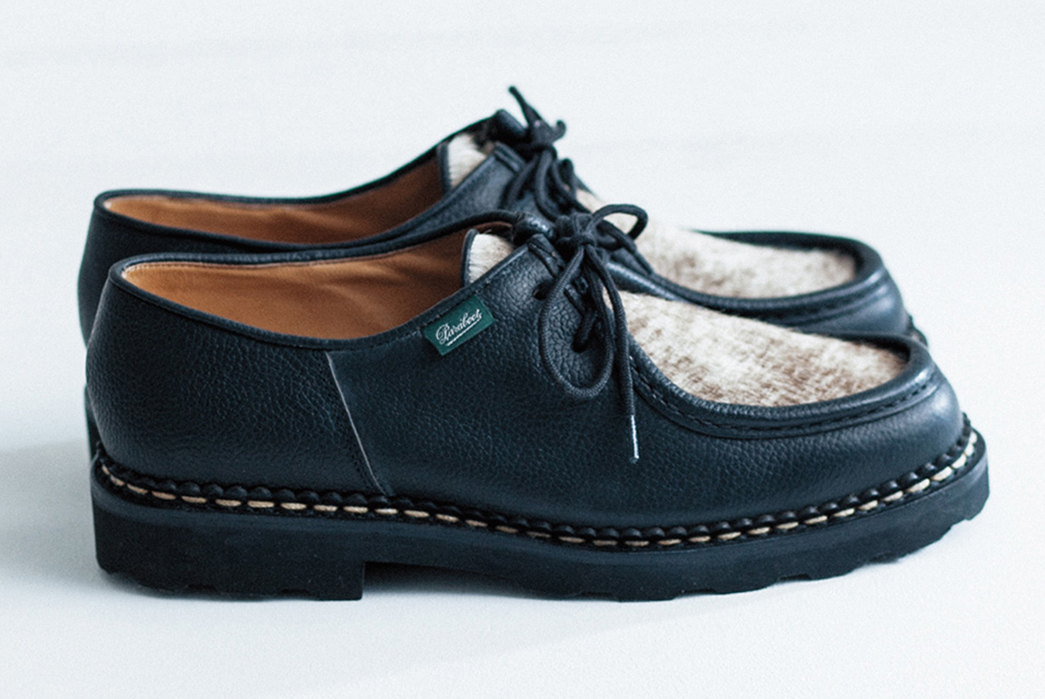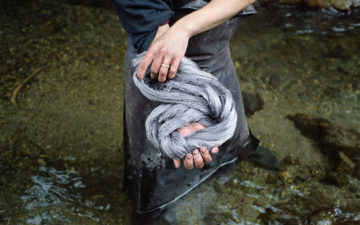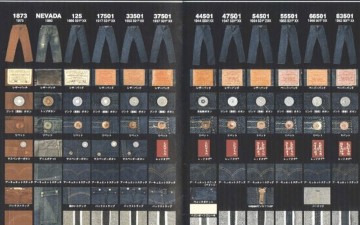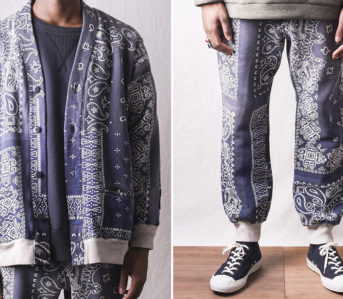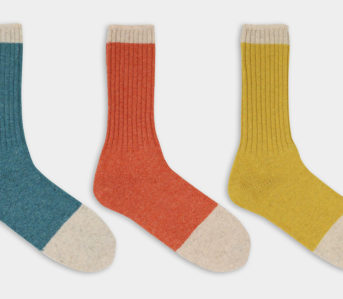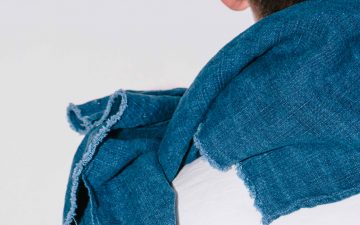The region of Tyrol in the Austrian and Italian Alps is known for ham, strudel, and obtuse clompy looking shoes. You know the type—a bold moc-toe, thick soles, and double eyelets at the lace-up fastening.
They’re more commonly thought of as Paraboot’s ‘Michael’ shoes or a weird spin on Clarks’ ‘Wallabees’, but the history of these intriguing kicks predates both of those models. And while the Tyrolean shoe tends to be divisive (okay, many say it’s downright ugly), it certainly is a staple in the wardrobes of many workwear enthusiasts.
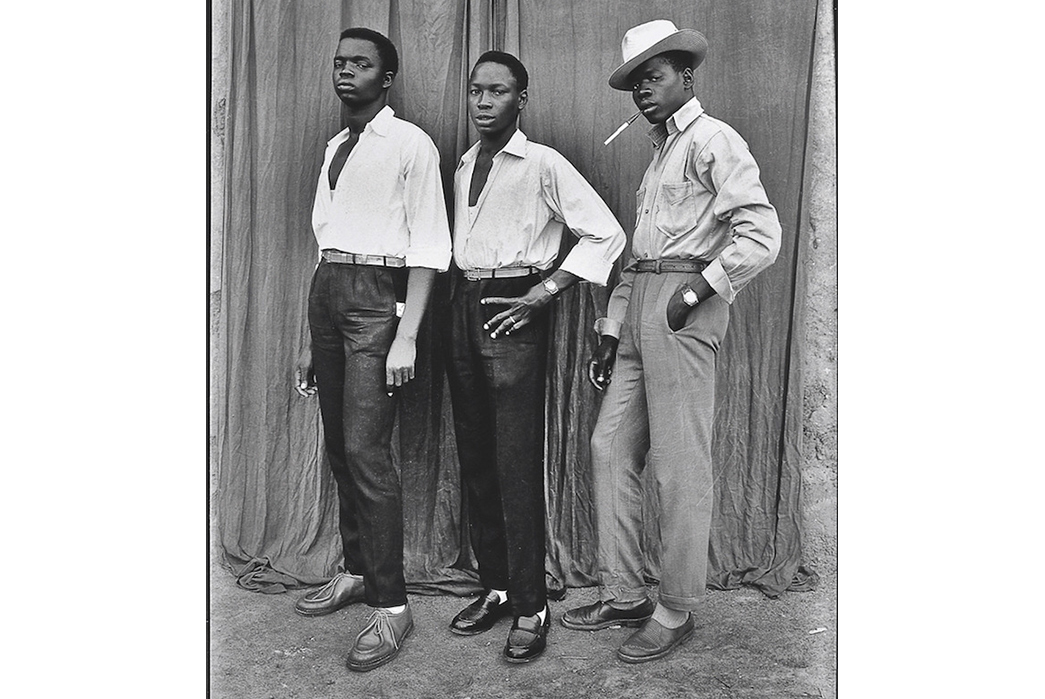
Image via Put This On
Aside from the distinctive moccasin stitching around the toe box and double eyelets, almost every style you come across will be Norwegian-welted (for waterproofness) and set on chunky rubber-lug soles, which are occasionally issued by Vibram. But you’ll be hard-pressed to find an in-depth history of the shoe’s origins.
All we really know is that it came about sometime after 1900 and was originally used for walking in the snowy hills of its native region. By the time 1945 rolled around, Julien Richard, of Parisian bootmaker Paraboot, issued the ‘Michael’ model after several years’ practice in crafting outdoorsy shoes with sturdy Norwegian-welted soles.
This new style set the bar for every other type of Tyrolean shoe to come after it, and the brand was so sure of the reliability of its latest release that it offered a 10-month guarantee, promising that the shoe wouldn’t need any repairs.
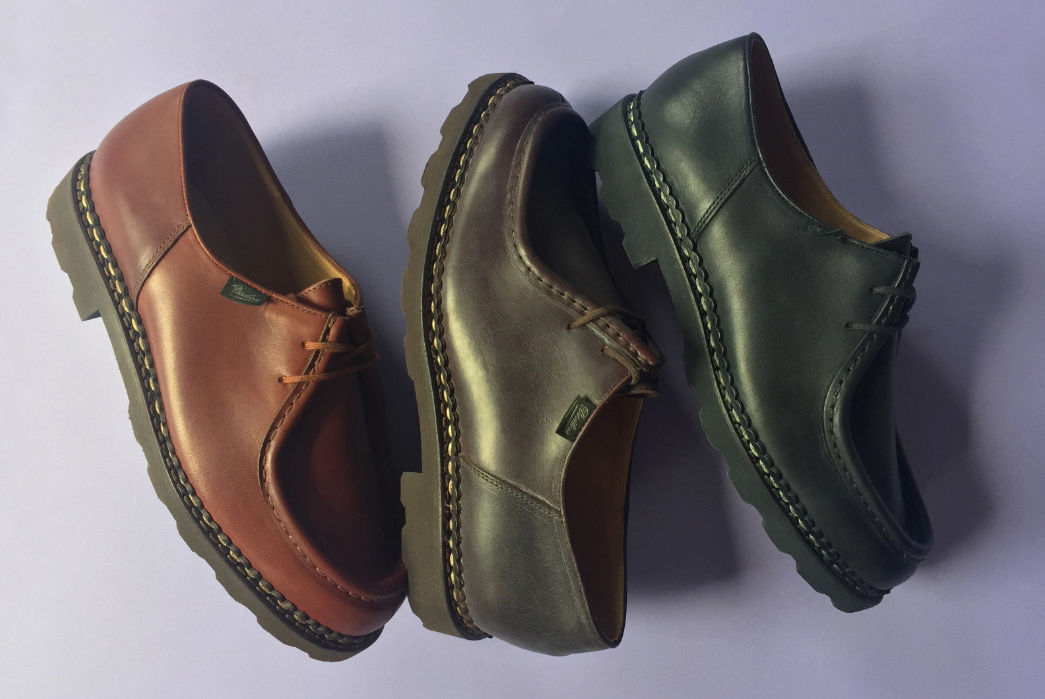
Paraboot’s ‘Michael’ shoes. Image via Oi Polloi
Throughout the decades, Paraboot’s iteration has proven itself as a durable investment, which is likely part of the reason why the style is so popular among the workwear crowd today. Another reason is thanks to a Bolognese distributor, W.P. Lavori, who saw potential in the ‘Michael’ just as Paraboot was on the brink of bankruptcy in the mid-1980s.
After offering it up to the masses, the brands found that soon enough, sharp dressers all over the continent were coveting the model. And as is the wont of traditional European designs and heritage-wear, Tyrolean shoes subsequently became highly sought-after in Japan, though exceptionally difficult to get ahold of (which, of course, only adds to their desirability).
Today, there are still a few makers in the local region making Tyrolean styles, such as Scarpa and Stadler Walker, but for the most part, the shoe’s popularity is thanks to the likes of Paraboot and a handful of other brands who’ve issued their own take on the genre. And let’s not forget how closely they resemble Clarks’ ‘Wallabee’ (first conceived in 1967 and initially designed by a German company) or even Red Wing’s classic moc-toe styles, which also came after Paraboot’s pair, in 1952.
So there you have it—who knew a style with such a foggy history could have potentially influenced some of the most coveted shoes of all time? Here’s a run-down of said styles so you can judge for yourself.
Clarks Wallabee
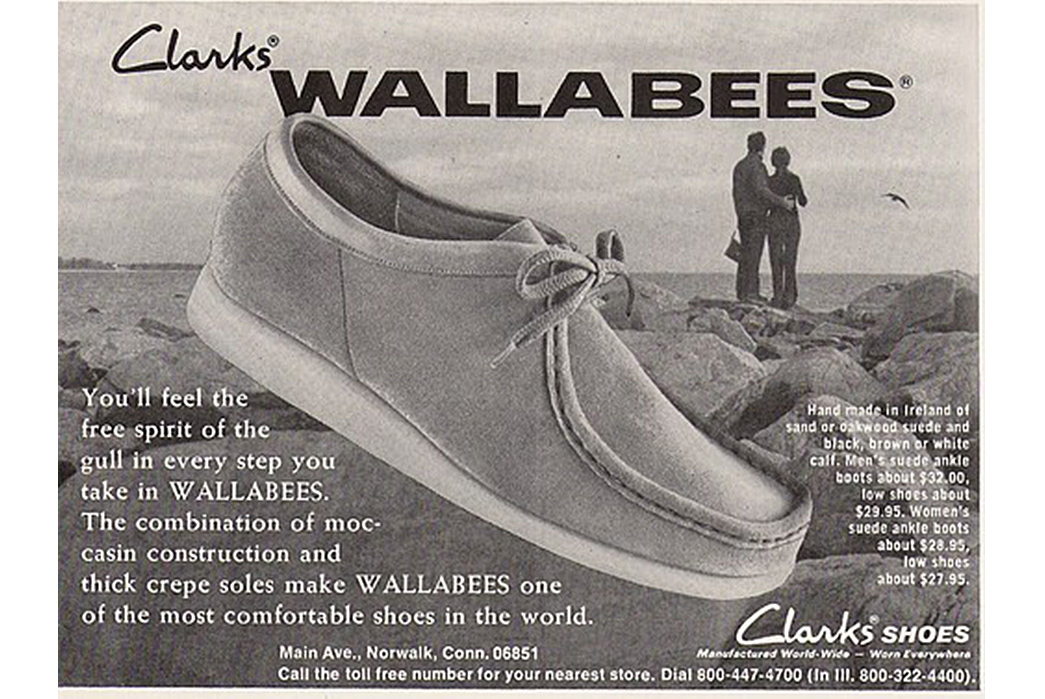
Image via Well Dressed Dad
Ah, the ‘Wallabee’–Clarks’ perennial moccasin-inspired shoe since the ‘60s, which. Notably, it doesn’t have a welted construction and instead rests on glued rubber-crepe soles.
Available for $150 at Clarks.
Heschung Thuya
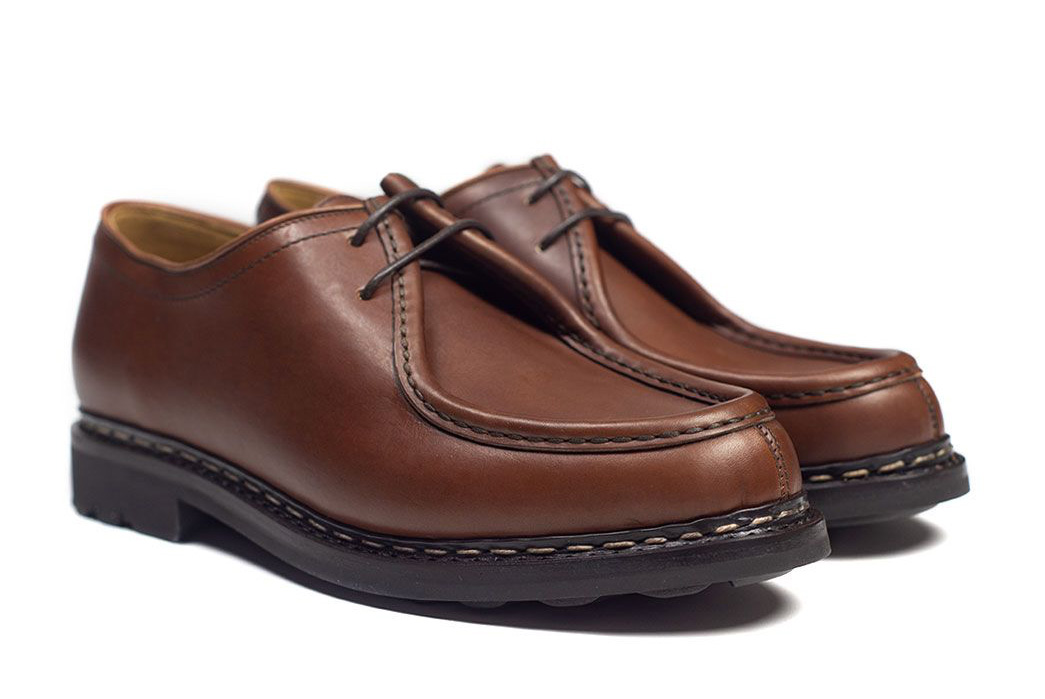
What you see is what you get with Heschung’s ‘Thuya’ style–this pair has all the classic details, full stop.
Available for $525 at No Man Walks Alone.
Mephisto Peppo
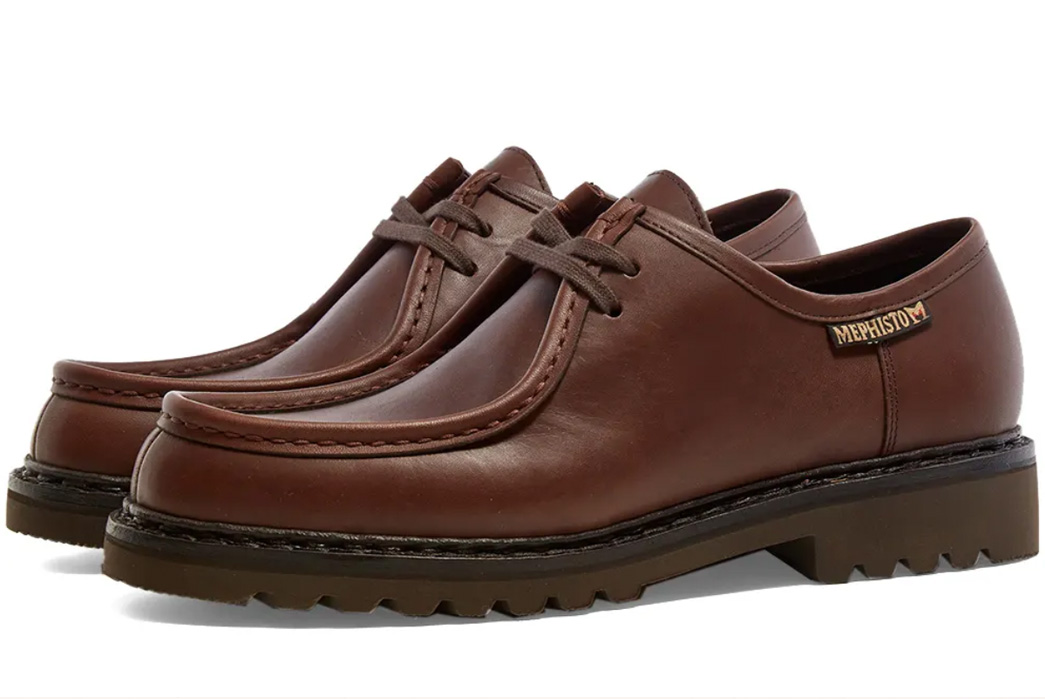
Another all-rounder, Mephisto’s ‘Peppo’ pair features its emblem in a less discreet manner than others and comes in a variety of leather and thread color combinations.
Available for $259 at End Clothing.
Kleman Padror
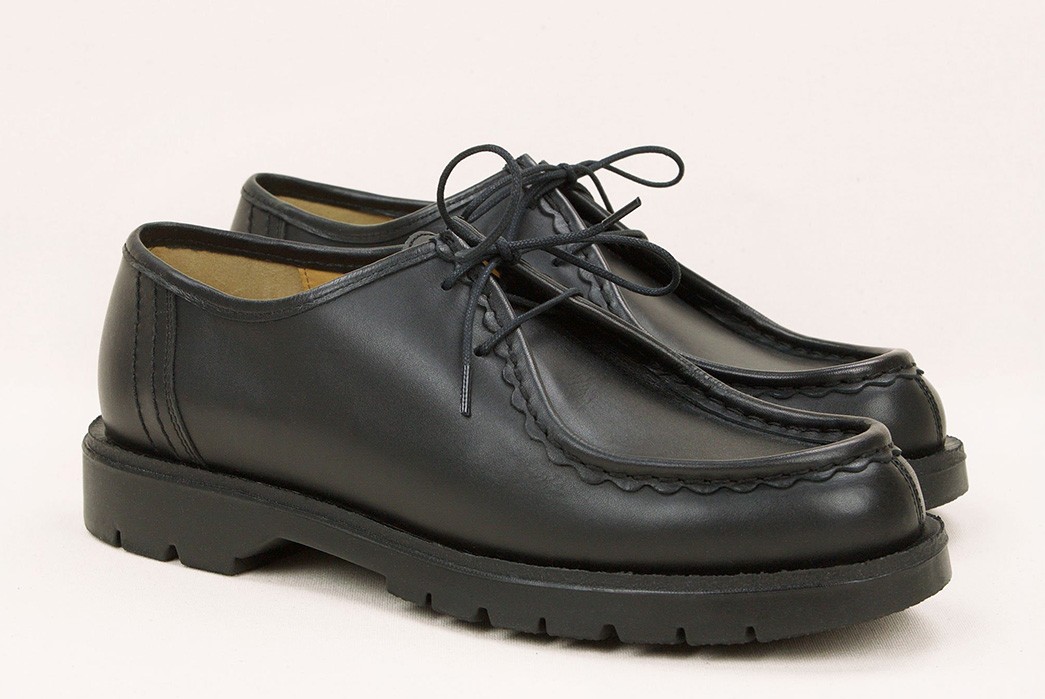
Here are Kleman’s ‘Padror’ shoes, complete with decorative scalloped leather around the moc-toe stitching. The style, which has been made to exactly the same specification since the ‘80s, is dubbed by the brand as “a sober and functional worker’s shoe that now dresses a new generation of talented city dwellers around the world.”
Available for $230 at Namu Shop.
Paraboot Michael
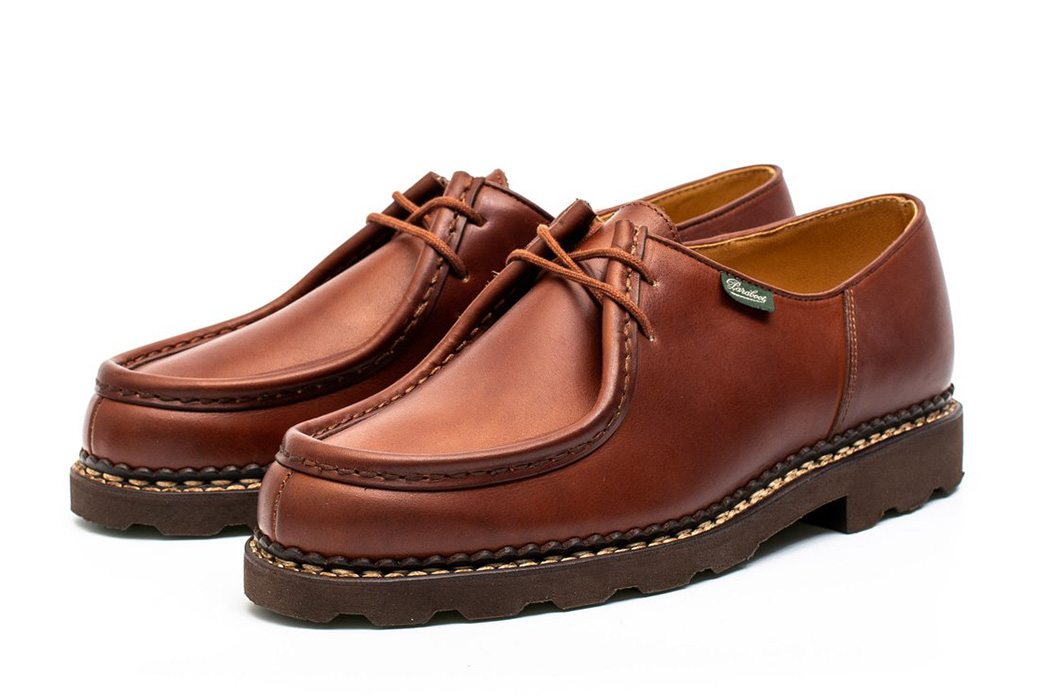
And finally, the archetype—Paraboot’s ‘Michael’, seen here in brown calf, which has provided the template for Tyrolean styles for decades.
Available for $405 at Clutch Cafe.

